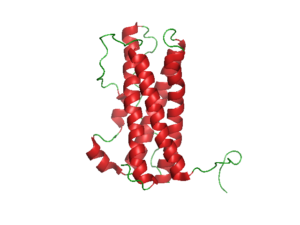Researchers document that acupuncture produces higher pregnancy rates than fertility medications for women with hyperprolactinemia (HPL).
 Acupuncture produces a higher rate of pregnancies than fertility medications with significantly less adverse effects. In a controlled clinical trial, researchers document that acupuncture outperforms bromocriptine and bromocriptine plus clomiphene for the treatment of infertility for women with hyperprolactinemia (HPL). Acupuncture produced a 43.3% pregnancy rate whereas fertility medications produced 20% pregnancy rate.
Acupuncture produces a higher rate of pregnancies than fertility medications with significantly less adverse effects. In a controlled clinical trial, researchers document that acupuncture outperforms bromocriptine and bromocriptine plus clomiphene for the treatment of infertility for women with hyperprolactinemia (HPL). Acupuncture produced a 43.3% pregnancy rate whereas fertility medications produced 20% pregnancy rate.
One important mechanism responsible for the fertility treatment success with acupuncture is hormonal regulation. Acupuncture more rapidly normalized levels of prolactin than fertility medications. In hyperprolactinemia, elevated levels of prolactin (PRL) hormone causes infertility by inhibiting gonadotropin-releasing hormone (GnRH) production. GnRH is responsible for stimulating gonadotropins (Gn), luteinising hormone (LH), and follicle-stimulating hormone (FSH) production. As a result, hyperprolactinemia affects the overall function of the ovaries, ovulation, and corpus luteum formation because Gn, LH, and FSH play an important biological role in reproductive health.
The study (Hu et al.) confirms that acupuncture normalizes prolactin levels more rapidly than receiving bromocriptine or bromocriptine plus clomiphene. Patients receiving acupuncture averaged a normalization of prolactin levels within two weeks. Patients receiving bromocriptine or bromocriptine plus clomiphene experienced normalization of prolactin levels within four weeks. The research indicates that acupuncture produces a faster homeostatic response for prolactin production in women with hyperprolactinemia.
One significant advantage to acupuncture treatment for the treatment of fertility emerged; acupuncture did not produce a high adverse effect rate. Conversely, fertility medications produced a high adverse effect rate. Patients receiving bromocriptine or bromocriptine plus clomiphene had a 63.33% adverse effect rate.
Hu et al. (Mawangdui Hospital of Hunan Province) determined that acupuncture is a preferential fertility treatment option for women with hyperprolactinemia. Production of greater positive patient outcomes combined with a significantly lower adverse affect rate was the basis for the conclusion. Let’s take a look at the treatment protocols for both the Traditional Chinese Medicine (TCM) approach and the pharmacological approach.
The investigation included 60 female patients with infertility due to hyperprolactinemia. They were randomly divided into two equal sized groups. Patients ranged from age 26 to 33. The duration of illness ranged from 2 to 8 years. Acupuncture group patients received only acupuncture. Medication group patients received bromocriptine or bromocriptine plus clomiphene. The clomiphene was added for patients with thermoregulation irregularities.
Therapy commenced on the 8th day of menstruation. A 0.30 mm x 40 mm disposable needle was used to administer acupuncture on all acupoints. For Qihai and Guanyuan, the needle was inserted in a slanted orientation and an upwards direction, thereafter manipulated with the Bu (tonify) technique. Zusanli was pierced perpendicularly for a depth of 1.5 inches, and the needle was manipulated with the Bu technique. Taichong and Ligou were both pierced for a depth of 0.5 inches, perpendicularly and horizontally respectively, then treated with the Xie (reducing) needle manipulation technique. For Taixi, the needle was inserted perpendicularly 0.5 inches deep and manipulated with the Bu technique. A needle retention time of 30 minutes was observed. During each menstrual cycle, one daily acupuncture session was conducted for a total of 10 days. The above treatment was administered for a period of 1 year.
For the fertility medication control group, an initial dosage of 1.25 mg of bromocriptine was administered twice per day after meals for 7 consecutive days. After that, the dosage was increased to 2.5 mg. Patients remained on the medication for a period of 1 year. In cases where the patient did not experience changes in dual-directional thermoregulation after 3 months of bromocriptine treatment, clomiphene was administered to facilitate ovulation. Bromocriptine is a synthetic drug and is an analogue of ergot alkaloids. It stimulates cortical dopaminergic receptors thereby inhibiting prolactin release. Clomiphene is a fertility drug that stimulates ovulation.
In hyperprolactinemia, women have unusually high levels of peripheral prolactin (PRL) and experience hypothalamic pituitary gonadal axis dysfunction. This often causes menstrual disorders, galactorrhea, reproductive dysfunction, and infertility. The rate of occurrence of hyperprolactinemia is 0.4% among healthy women and 7% – 9% for infertile women (Zhang, 2012). The authors focused on the benefits of acupuncture for promoting fertility. However, the normalization of prolactin levels may have additional benefits for the patients. Further studies to examine the more global effects of acupuncture on PRL normalization and bodily health are required to quantify and confirm these additional benefits.
In Traditional Chinese Medicine, hyperprolactinemia results from a Chong and Ren meridian imbalance. The acupuncture point prescription chosen for the treatment protocol reflects this principle. The signature Zusanli acupoint is effective in promoting overall qi circulation. Together with Qihai and Guanyuan, these three acupoints consolidate yuan qi, revitalize the body, nourish body cells, and strengthen the reproductive system. Taichong and Ligou are acupoints located along the liver meridian, making them significant acupoints for promoting liver health. Taixi, being a kidney meridian acupoint, is ideal for promoting kidney health. Sanyinjiao is a powerful acupoint that maintains general bodily health and has proven efficacy in treating gynecological disorders. Acupuncture administered to Taichong, Ligou, Taixi, and Sanyinjiao has an overall effect of promoting qi circulation along the liver, spleen, and kidney meridians. Acupuncture on all of the aforementioned acupoints collectively promotes liver and kidney health, dredges liver qi, and benefits the Chong and Ren meridians.
As part of continuing education in the field of acupuncture and clinical research, additional studies using this acupuncture point prescription protocol with larger sample sizes will help to confirm the findings of Hu et al. It will also be interesting to see a third study group added to future investigations comparing acupuncture combined with medications to groups receiving medications or acupuncture only.
Rubin et al. conducted an investigation of acupuncture combined with medications. The research team consisted of investigators from the University of Washington, Oregon College of Oriental Medicine, and Northwest Center for Reproductive Sciences. Their meta-analysis confirms that live birth rates increase when acupuncture is added to standard care protocols for women receiving donor egg IVF (in vitro fertilization).
Xu et al. conclude that acupuncture benefits fertility rates for women with anovulatory infertility. The Ruikang Hospital researchers had a sample size of 40 patients. The effective rate was 85% based on the pregnancy rates measured in follow-up examinations. Acupuncture normalized FSH, LH, and E2 levels. Additionally, the thickness of the endometrium and the follicle diameter increased. Zigong, CV4, and CV3 were the primary acupoints used in the treatment protocol supplemented by additional Ling Gui Ba Fa acupoints. Ling Gui Ba Fa (eightfold sacred tortoise method) employs the addition of acupoints from a selection from the eight confluent points based on the time of day.
Overall, there is wealth of information indicating that acupuncture is successful in promoting reproductive health. Pregnancy rates increase accompanied by measurable improvements in hormonal regulation. Additional research is warranted based on the evidence.
excerpt from:
Acupuncture Balances Hormones, Increases Pregnancy Rates







